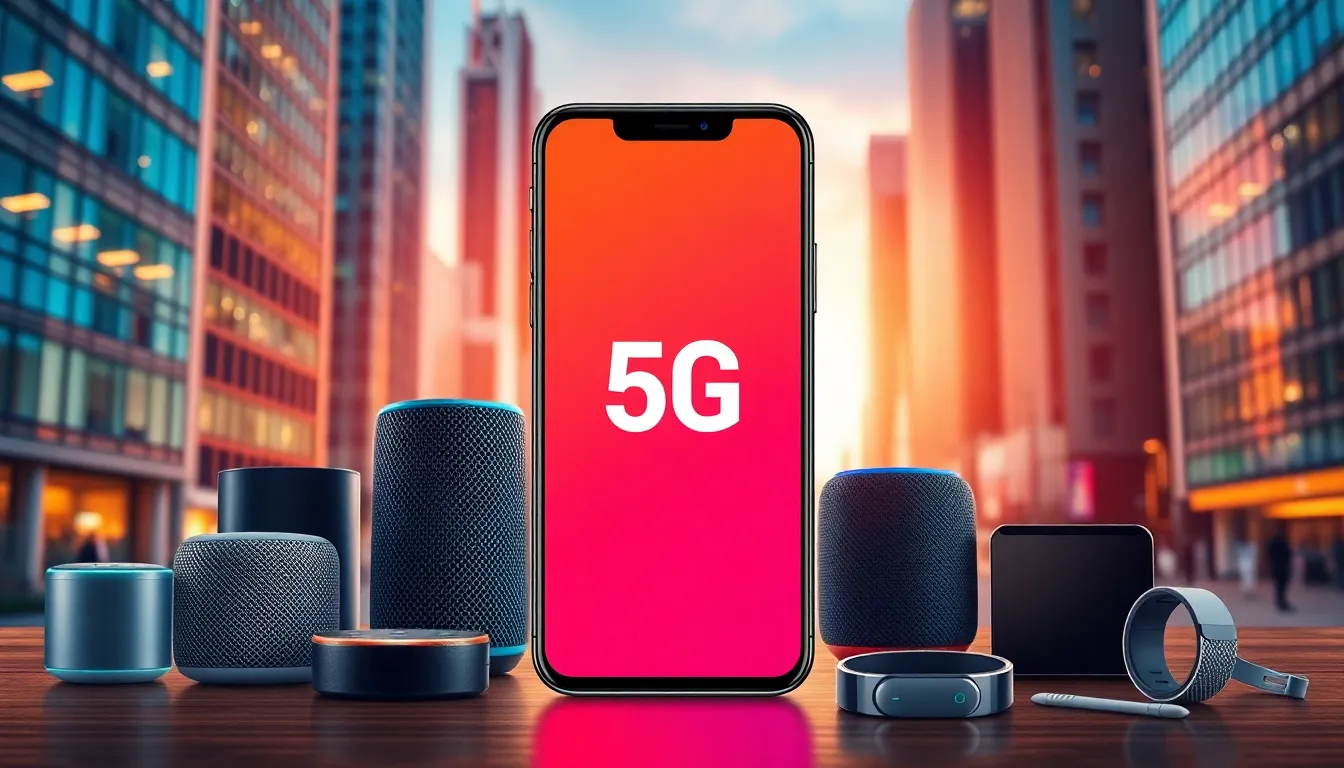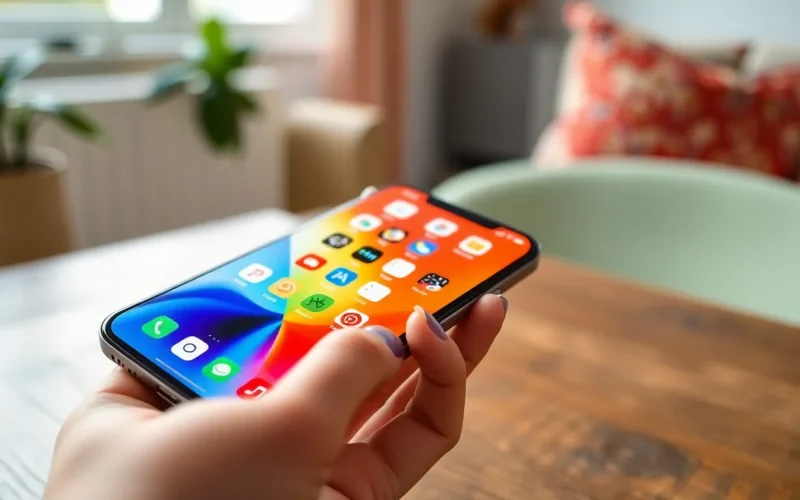Table of Contents
ToggleIn a world where speed is king, everyone wants to know if their trusty iPhone XR can keep up with the 5G revolution. After all, who wouldn’t want to stream cat videos at lightning speed or download movies faster than they can say “buffering”? But before you start imagining your XR transforming into a 5G powerhouse, let’s get to the heart of the matter.
The iPhone XR, while a beloved device, doesn’t quite have the 5G chops. It’s like showing up to a race in a go-kart when everyone else is in a Ferrari. But don’t fret! This doesn’t mean your XR is obsolete. It’s still a solid performer for everyday tasks and will keep you connected in style. So, let’s dive into what this means for you and whether it’s time to upgrade or stick with your trusty sidekick.
Overview of iPhone XR
iPhone XR features a 6.1-inch Liquid Retina display with a resolution of 1792 x 828 pixels. The device utilizes Apple’s A12 Bionic chip, enhancing performance and battery life. With a single 12-megapixel rear camera, it captures high-quality photos and videos, offering features like Smart HDR. Users enjoy Face ID technology for secure authentication.
Storage options include 64GB, 128GB, and 256GB, providing flexibility for users. It operates on iOS, ensuring access to the latest apps and updates. The iPhone XR supports wireless charging, making it convenient for daily use.
Colors available include black, white, blue, yellow, coral, and (PRODUCT)RED, appealing to various preferences. Despite lacking 5G capability, the device remains suitable for 4G LTE networks, ensuring reliable connectivity for everyday tasks.
Durability is another key aspect. IP67 rating offers water and dust resistance, making it a practical choice for different environments. The iPhone XR’s battery life lasts up to 25 hours on calls, allowing users to stay connected throughout the day.
Overall, the iPhone XR remains a solid choice for those seeking a reliable smartphone experience without 5G needs. Users must evaluate personal usage patterns when deciding to upgrade or continue using this model.
5G Technology Explained

5G technology represents the next generation of mobile connectivity, focusing on faster speeds and improved performance. Unlike 4G, 5G offers significantly lower latency and can handle many connected devices simultaneously.
What Is 5G?
5G refers to the fifth generation of mobile networks, designed to enhance the user experience with increased bandwidth. This technology allows for download speeds reaching up to 10 Gbps under ideal conditions. Enhanced capacity supports numerous devices, connecting smart technology while maintaining performance. With improved reliability, 5G plays a crucial role in enabling innovations like autonomous vehicles and advanced telemedicine.
Benefits of 5G Connectivity
5G connectivity brings various advantages that enhance everyday mobile usage. First, users experience faster downloading and streaming, allowing seamless video calls and high-definition content. Second, lower latency improves response times for gaming and real-time applications, making experiences much smoother. Third, the ability to connect many devices without sacrificing speed supports smart home technologies. Lastly, enhanced reliability ensures users can maintain connections in crowded areas with multiple devices active, like stadiums or concerts.
iPhone XR Specifications
The iPhone XR features various specifications that appeal to many users, despite lacking 5G capability. It supports 4G LTE networks and showcases a range of technological advancements.
Network Compatibility
The iPhone XR operates on 4G LTE networks. This compatibility ensures reliable connectivity for everyday tasks such as browsing and streaming. Users can access multiple frequency bands, making it a versatile device in various regions. While it lacks support for the latest 5G networks, the XR performs well for standard mobile activities. Overall, 4G LTE delivers sufficient speed for most users’ needs.
Supporting Technologies
The iPhone XR incorporates several supporting technologies designed to enhance user experience. It utilizes the A12 Bionic chip, offering fast performance and efficiency. Wireless charging functionality adds convenience to daily usage. The device runs on iOS, providing access to a vast ecosystem of apps. Additionally, the 6.1-inch Liquid Retina display ensures vibrant visuals for entertainment and productivity. Overall, these features create a solid user experience, addressing the needs of non-5G users.
Does iPhone XR Have 5G Capability?
The iPhone XR does not feature 5G capability. Although the device remains popular, it relies solely on 4G LTE networks for connectivity.
Official Stance from Apple
Apple clearly states that the iPhone XR supports 4G LTE networks. According to Apple’s official specifications, the device was released in 2018, preceding the widespread rollout of 5G technology. Users seeking 5G functionality must look to newer models, such as the iPhone 12 or later. This distinction is crucial for those exploring purchasing options and considering future-proofing their devices.
User Experience and Feedback
Users generally appreciate the iPhone XR for its strong performance despite lacking 5G. Many regular tasks, including browsing and streaming, operate smoothly on 4G LTE. Feedback indicates satisfaction with battery life, camera quality, and display vibrancy. While some users express concern about future connectivity, many find the XR continues to meet their daily needs. Overall, satisfaction remains high among non-5G users, as they value the device’s cost-effectiveness and solid features.
Possible Alternatives to iPhone XR for 5G
Newer iPhone models such as the iPhone 12 and later support 5G connectivity. These devices offer enhanced speeds, lower latency, and access to the latest network capabilities. Users looking for 5G might consider the iPhone 12 series, which includes variants like the iPhone 12 Mini and iPhone 12 Pro, providing options for different preferences and budgets.
Samsung Galaxy S21 provides another great alternative, featuring an impressive display and strong camera performance. It supports both sub-6GHz and mmWave 5G, ensuring access to various 5G networks. With a robust design and versatile software capabilities, this smartphone caters to users needing high-speed connectivity.
Google Pixel 5 serves as a solid option for those valuing camera quality and software updates. This device incorporates 5G support and consistently receives the latest Android features. The Pixel 5’s user-friendly interface and exceptional photography make it a favorite among many smartphone users.
OnePlus 9 excels in performance with its fluid display and fast charging. This device supports both 5G bands, providing flexibility depending on user location and carrier. Its emphasis on speed and efficiency makes it appealing for users engaged in demanding mobile activities.
Sony Xperia 5 II presents another viable alternative, combining high-end camera features with 5G connectivity. This phone caters to photography enthusiasts and gaming professionals alike. With a unique 21:9 display aspect ratio, it offers an immersive multimedia experience.
Considering these alternatives offers users the chance to access the benefits of 5G technology and enhanced mobile performance. While the iPhone XR remains a good choice for non-5G users, exploring these newer options could lead to an upgraded experience in connectivity and functionality.
The iPhone XR remains a reliable and capable device for users who do not need 5G connectivity. With its solid performance and impressive features it continues to satisfy many users’ daily needs. While it lacks the speed and advantages of 5G technology it still provides a robust experience for tasks like browsing and streaming.
For those looking to upgrade to a 5G-capable device there are plenty of newer models available that offer enhanced speed and performance. However for many the iPhone XR’s balance of features and affordability makes it a smart choice. Users should assess their individual needs and decide if the current capabilities of the XR are sufficient or if an upgrade is warranted.





